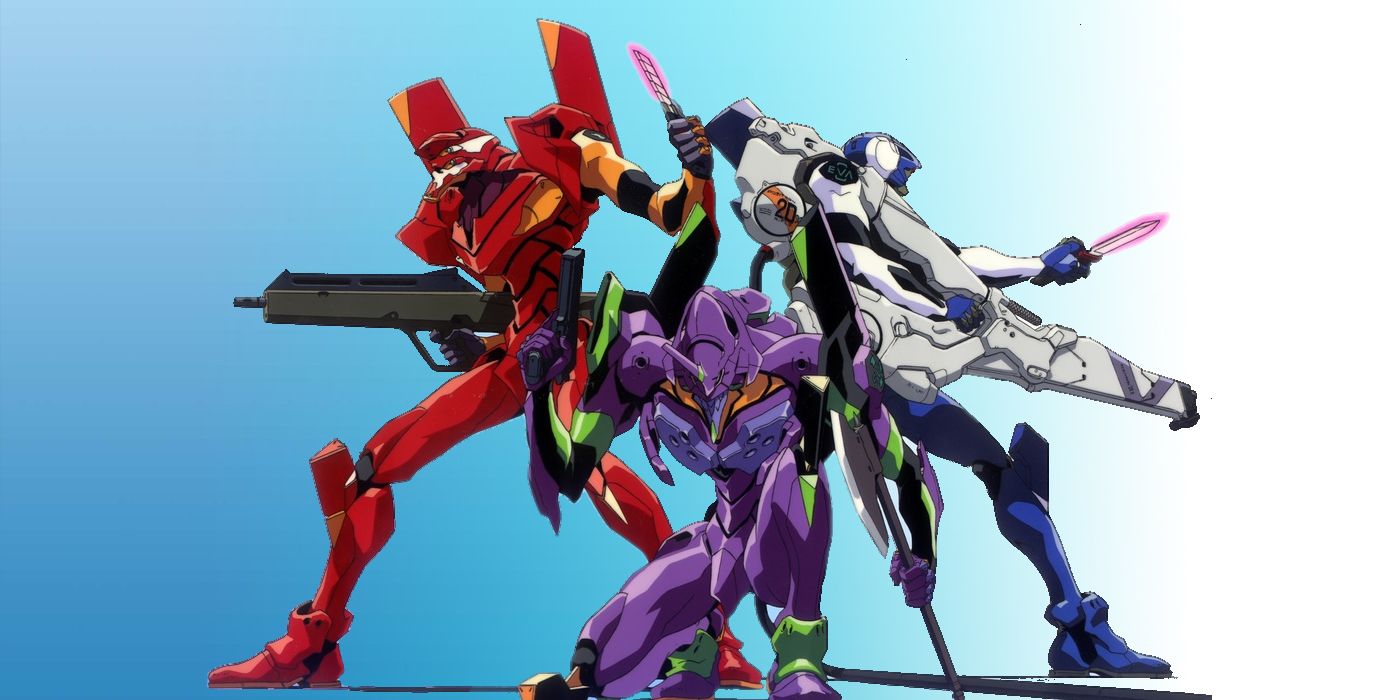Exploring `eva N O T T Y`: A Deep Dive Into A Cultural Phenomenon
Have you ever felt like a piece of art just gets you, speaking to parts of your soul you didn't even know existed? That, in a way, is how many people feel about what some call `eva n o t t y`, a series that has, you know, really left its mark on popular culture. It is a story that goes beyond giant robots fighting monstrous beings; it looks at the human condition, at what makes us tick, and at our often-messy connections with others. This isn't just another cartoon; it's a deep, thought-provoking journey that has, rather, stayed with people for decades.
For many, this series, often referred to as "Evangelion," became a mirror, reflecting our own struggles with growing up, with finding our place, and with trying to connect. It is, quite literally, a story that doesn't offer easy answers, much like life itself. We'll explore why this series, which some might search for as `eva n o t t y`, continues to captivate hearts and minds, offering a kind of emotional release for so many viewers.
This article will take a closer look at the origins of `eva n o t t y`, its profound themes, the different versions that exist, and its lasting influence on everything from other anime to video games. We'll, actually, unpack some of the mysteries and the brilliance that make this work so special, helping you to see why it has earned its place as a true classic.
Table of Contents
- The Story Behind the Story: Genesis of `eva n o t t y`
- The Core of `eva n o t t y`: Themes and Philosophy
- Versions and Evolution: A `eva n o t t y` Timeline
- Impact and Legacy: Why `eva n o t t y` Still Matters
- Frequently Asked Questions about `eva n o t t y`
- Conclusion
The Story Behind the Story: Genesis of `eva n o t t y`
The story of `eva n o t t y`, or "Neon Genesis Evangelion," began in the 1990s, a time when, you know, animated shows were really starting to push boundaries. This particular series, however, was something else entirely. It came from the mind of Hideaki Anno, a creator who was, apparently, a self-described "otaku" with a deep fondness for special effects and science fiction. His personal experiences and inner world, it seems, very much shaped the heart of the show.
Anno's work, including `eva n o t t y`, often shows young people dealing with their own growth and the tangled feelings that come with it. It's almost as if he was putting his own psychological journey onto the screen. This focus on personal development and inner conflict is, in a way, a consistent thread throughout his creative efforts, starting even before this particular series. So, what you see on screen is, basically, a reflection of his own growth as a person and an artist.
Interestingly, the production of `eva n o t t y` happened during a time of significant events in Japan, particularly the police actions against the Aum Shinrikyo cult in 1995. According to cultural commentator Azuma Hiroki, Anno, in fact, adjusted some of the plot elements of the show after hearing about these events. This was, arguably, due to concerns about censorship and the general political atmosphere of the time. It just goes to show how much outside events can, you know, subtly shape a creative work.
The Core of `eva n o t t y`: Themes and Philosophy
Beyond Giant Robots: Human Connection
At its heart, `eva n o t t y` is, quite simply, not about people fighting monsters. Instead, it's about people trying to connect with each other, which is a big deal. The show just uses the popular giant robot genre of its time as a kind of vehicle for this deeper message. It's a bit like a Trojan horse, really, delivering profound psychological, philosophical, and even religious ideas wrapped in exciting action sequences. This mix of deep thought and thrilling visuals is, in some respects, why the series has remained so powerful and loved for so long.
The way `eva n o t t y` uses "stream of consciousness" storytelling and mixes in these complex ideas is, you know, part of its unique charm. It doesn't spoon-feed you answers; instead, it invites you to think, to feel, and to interpret things for yourself. This approach is, perhaps, what gives the series such a strong and lasting appeal, making it a true masterpiece in the eyes of many viewers. It's not just a show you watch; it's a show you experience, and that's a very big difference.
Spiritual Echoes: Biblical References and Lore
The title itself, "EVA," is, apparently, a direct reference to "Eve" from the Bible, which is pretty interesting. And that's just the beginning of the spiritual connections. While `eva n o t t y` definitely has a lot of religious ideas floating around, they're often presented in a way that's, you know, a bit jumbled and just there for the cool factor. It's not a religious text, but it borrows heavily from one. The concept of "Evangelion" itself, meaning "Gospel," also comes from biblical ideas.
A central piece of lore in `eva n o t t y` is the "Dead Sea Scrolls." In the story, these ancient texts are, essentially, treated as newly discovered "Gospel" writings. They serve as a kind of foundational prophecy that drives much of the narrative. So, even though the show plays fast and loose with these references, they do, in fact, provide a rich, mysterious backdrop to the events unfolding on screen, adding layers of meaning that viewers can, arguably, spend years thinking about.
The Purpose of the EVAs: Restraint, Not Power
One of the most striking things about the giant EVA units in `eva n o t t y` is that their armor isn't there to make them stronger. Quite the opposite, in fact. The armor is, basically, a set of restraints, designed to hold back the immense and dangerous power of the EVAs themselves. This is why, you know, we often see a single EVA struggling to defeat an Angel, the monstrous invaders; it usually takes several units working together to get the job done.
A pivotal moment in the series happens when EVA Unit-01, Shinji's machine, consumes the S2 Engine of the Fourteenth Angel. This act grants it the ability to regenerate itself, making it, in a way, almost a complete version of Lilith, one of the foundational beings in the series' lore, except for its soul. This transformation is, apparently, why EVA Unit-01 becomes such a key piece in Gendo Ikari's plans, showing its true, terrifying potential. It's a pretty big deal, really, for the story.
Versions and Evolution: A `eva n o t t y` Timeline
The Original Broadcast: A Surprising Arrival
It's, actually, pretty hard to find much information about how `eva n o t t y` first made its way to television outside of Japan, particularly on local stations. From the limited details available, it seems, you know, its introduction might have been a bit of an accident. One theory is that broadcasters simply picked up whatever was popular in Japan at the time, without much specific thought. Another idea is that because `eva n o t t y` was so incredibly popular in Japan, it was brought over just to see how it would do.
Interestingly, when it aired on local stations, the show wasn't called "Neon Genesis Evangelion." It went by a different name, which is, in some respects, a curious detail for fans. This early, perhaps unexpected, broadcast helped lay the groundwork for its later, massive popularity, even if its initial appearance was, basically, a quiet one. It's a bit of a mystery, really, how it all started.
From TV to The End: Expanding the Story
After the original TV run of `eva n o t t y`, the story, you know, temporarily wrapped up with the release of "The End of Evangelion" (EOE). This film offered a different, often intense, conclusion to the series. Then, in 2003, the TV version got a bit of a polish. This "remastered" version mainly smoothed out the pacing of the episodes after number 20, which had, apparently, felt a bit rushed in the original broadcast. It's not a totally new version, more like a refined edition of the first one.
There's also a version that has been floating around online called "Neon Genesis Evangelion -FANS 2005 Remastered Edition." It's important to know that this one wasn't officially released. Instead, it was put together by a fan subtitle group in 2005. So, while it's out there, it's not, you know, something that came from the original creators. You can watch it or skip it; it's, basically, up to you.
The Rebuilds: A New Chapter, A New Ending
Then came the "Rebuild of Evangelion" film series, starting with "Evangelion: 1.0 You Are (Not) Alone" in 2007. This movie, in a way, largely followed the original TV series' plot but with brand-new animation. These new films, often called the "Rebuilds," represent a significant shift. The final film in this series, "Evangelion: 3.0+1.0 Thrice Upon a Time," released much later, offered a sense of closure.
This last film, for many, felt like Hideaki Anno, the creator, was, you know, finding a way to make peace between his older self and his younger self. When Shinji Ikari, the main character, says "Goodbye, all Evangelions" in the final movie, it's more than just a farewell to an anime. It's, in some respects, a moment of letting go of that part of ourselves that, perhaps, hid in the "EVA cockpit" since 1995, afraid to face the real world. It's a very powerful moment, really, for so many people who grew up with the series.
Impact and Legacy: Why `eva n o t t y` Still Matters
Cultural Footprint: Influencing Other Works
The influence of `eva n o t t y` isn't just limited to Japan; it has, in fact, spread far and wide. If you've ever played games like Honkai Impact 3rd, you'll, you know, probably notice some clear similarities. Even novels, like Jiang Nan's "Tian Zhi Chi" (which, by the way, is still unfinished, unfortunately!), show the series' clear impact. It's, basically, everywhere once you start looking for it.
The series' unique blend of action, deep psychological exploration, and philosophical questions has, apparently, inspired countless creators across different mediums. It showed that animation could be, you know, incredibly complex and emotionally resonant, pushing the boundaries of what a "cartoon" could be. Its artistic and narrative choices have, in some respects, become benchmarks for many who followed, proving its lasting power.
A Personal Journey: Saying Goodbye
As we've seen, `eva n o t t y` doesn't give you simple answers. It's a bit like life itself, which also rarely offers perfect solutions. For many, the journey with this series has been a deeply personal one. It's not just about watching a story unfold; it's about seeing parts of your own struggles and triumphs reflected in the characters and their world. This connection is, you know, very much why it resonates so strongly.
The series, particularly with its recent film conclusion, offered a chance for fans to, perhaps, finally say goodbye to a significant part of their past. It's a moment of moving forward, acknowledging the lessons learned, and stepping out of that metaphorical cockpit. It's, basically, a testament to the show's enduring emotional weight and its ability to help people process their own growth. You can learn more about psychological themes in anime on our site, and for a deeper dive into its impact, check out our other articles on pop culture.
Frequently Asked Questions about `eva n o t t y`
What does the name EVA mean?
The name "EVA" is, apparently, a reference to "Eve" from the Bible. This connection highlights the series' strong use of religious themes and symbols, which, you know, run throughout the story, adding layers of meaning for viewers to explore.
How many versions of `eva n o t t y` are there?
There are several versions of `eva n o t t y`. These include the original TV series, "The End of Evangelion" movie, a 2003 TV remaster, and the "Rebuild of Evangelion" film series which started in 2007. There was also, in fact, a fan-made 2005 "remaster" that circulated online.
Is `eva n o t t y` really about giant robots fighting?
While `eva n o t t y` does feature giant robots fighting, the core of the story is, basically, about human relationships and personal psychology. The robot action is, in a way, a vehicle for exploring deeper themes like communication, isolation, and the challenges of growing up. It's, you know, much more than just a mech show.
Conclusion
So, `eva n o t t y`, or "Neon Genesis Evangelion," stands as a powerful piece of storytelling that continues to provoke thought and emotion. It's a series that, in some respects, dares to ask big questions about what it means to be human, to connect with others, and to find your own path. Its unique blend of action, psychology, and complex lore has, apparently, secured its place as a truly iconic work. It just shows how much an animated series can, you know, really affect people deeply.
Whether you're new to the series or revisiting it, there's always something new to discover, a fresh perspective to gain. The discussions and interpretations around `eva n o t t y` are, you know, as vibrant today as they were when it first aired. If you haven't experienced it, perhaps now is the time to see what all the talk is about. Dive into the world of `eva n o t t y` and see what personal insights you might find. You can find more information about its cultural impact on Wikipedia.

Evangelion: Every EVA Unit from the Original Series Explained

Eva Mendes - Wikidata

Crafted for precision, durable yqe 6 eva fishing floats for all fishing